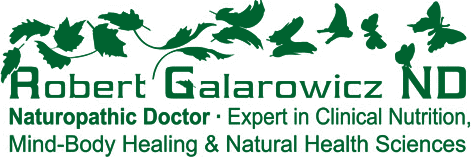Bed wetting (Enuresis) commoner in boys.
Nighttime bedwetting is a problem for about 5 out of every 100 kids, but according to a new study sponsored by the Journal of Pediatrics, it’s twice as common in boys as it is in girls.
The study, conducted by scientists at Prince of Wales Hospital at the Chinese University of Hong Kong, followed more than 6000 children. The gender results broke down at about seven out of 100 boys wetting the bed once a month or more, compared to about three out of 100 girls. According to Dr. Joseph Barone, a specialist in pediatric urology at Bristol-Myers Squibb Children’s Hospital in New Brunswick, New Jersey, bedwetting is hereditary in about 40% of cases.
Dr. Barone, who did not take part in the new study, explained that the controlling links between brain and bladder may not be fully developed in bedwetting youngsters. Since girls mature faster, this may partly explain the discrepancy; but 99% of both sexes outgrow bedwetting by age 15.
The Journal of Pediatrics researchers studied about 6000 children between 6 and 11 years of age in Hong Kong, evenly divided between boys and girls. The subjects’ parents completed questionnaires recording how often their children wet their beds. The researchers were not surprised to find that the incidence went down markedly with age, with about 9 out of 100 six-year-olds wetting at night, and only about two out of 100 eleven-year-olds.
Dr. Barone said that for most kids suffering from bedwetting, the most effective means of cure is an alarm, a small device with a sensor that the child wears in his or her underwear, which switches on a sound alarm when wetness is detected. The small alarm can rest on the pillow by the child’s head, or be worn on the wrist. They are relatively inexpensive at around $50 or $60, with more deluxe models going for as much as $150. Used correctly, they cure bedwetting in 80 to 90 percent of cases.
In the small number of cases where the alarm doesn’t work, medications like imipramine and desmopressin acetate (DDAVP) may be prescribed – although Dr. Barone points out that they can have side effects, and are treatments rather than cures.
Another focus of the Hong Kong study was to explore any relation that might show up between bedwetting and sleep apnea. The American Academy of Pediatrics reports that earlier researches had shown a possible link with this sleep disorder, which shows up in about 1 in 50 youngsters.
For this part of the study, smaller groups were compared, about 400 children who were deemed to be high-risk for sleep apnea and 200 who showed no such risk factor.
No correlation showed up, as the incidence of bedwetting in both these smaller groups was the same, approximately 9 out of 100. This overall incidence was higher than the incidence in the larger group of 6000, which may have been because the children were being closely monitored in a sleep lab.
The usual treatment for pediatric apnea is removal of tonsils and/or adenoids. Should the patient also suffer from bedwetting, said Dr. Barone, about half the time that condition will clear up too.
Dr. Barone reiterated that alarms cure the great majority of cases, and concluded, “Nothing else is going is going to cure bedwetting, other than outgrowing it.”
If your child needs help with bed wedding call me at 201.618.3534 or click here to contact me…
Definition of enuresis:
Enuresis is the involuntary discharge of urine by a child age 5 and over. It can be psychologically distressful and a embarrassing for a child, but not physically harmful. Enuresis places a child at risk for name-calling and teasing from peers. This type of behavior can damage a child’s self esteem. The presence of enuresis can place a limit on participation in highly desirable social experiences such as sleepovers and camp. The child may also have to face anger and humiliation from parents who do not understand the nature of this disorder.
south hackensack, n.j., clifton, n.j. montclair, n.j. children holistic new jersey new york children pediatrics west orange, n.j. east orange, n.j. orange, n.j. south orange, n.j. passaic, n.j. glen ridge, n.j. newark, n.j. asbury park, n.j. holistic natural health pediatrics children englishtown, n.j. long branch, n.j. coltsneck, n.j. perth amboy, n.j. edison, n.j. south amboy, n.j. union, n.j. elizabeth, n.j. avenel, n.j. elizabethport, n.j. children holistic pediatrics springfield, n.j. montrose, n.j. cranford, n.j. linden, n.j. mountainside, n.j. garwood, n.j. clark, n.j. rahway, n.j. riverside, n.y. carteret, n.j. scotch plains, n.j. fanwood, n.j. gillette, n.j. colonia, n.j. port reading, n.j. plainfield, n.j. irvington, n.j. northvale, n.j. old bridge, n.j. children holistic pediatrics north brunswick, n.y. red bank, n.j. fords, n.j. keasbey, n.j. dunellen, n.j. liberty corner, n.j. atlantic highlands, n.j. keansburg, n.j. sayreville, n.j. hazlet, n.j. deal, n.j. freehold, n.j. plainsboro, n.j. eatontown, n.j. skillman, n.j. amwell, n.j. allenhurst, n.j. rocky hill, n.j. changewater, n.j. annandale, n.j high bridge , n.j. oakhurst, n.j. three bridges, n.j. monmouth junction, n.j marlboro , n.j. belle mead, n.j. dayton, n.j. neshanic station , n.j. great meadows , n.j. matawan, n.j. monmouth, n.j. fort monmouth , n.j. monmouth beach , n.j. oceanport, n.j. whitehouse station, n.j. helmetta , n.j. hillsborough, n.j. fair haven, n.j. wickatunk, n.j. howell, nj lincroft, n.j. keyport, nj gladstone n.j. port monmouth, n.j. bound brook, n.j. highland park, n.j. farmingdale, n.j. little silver, n.j. morganville, nj spotswood, nj weston, n.j. rumson, n.j. south bound brook, n.j. farmingdale, nj bedminster, nj pluckemin, nj cliffwood, nj manville, nj long valley, nj milltown, nj zarephath, nj belford, nj south


